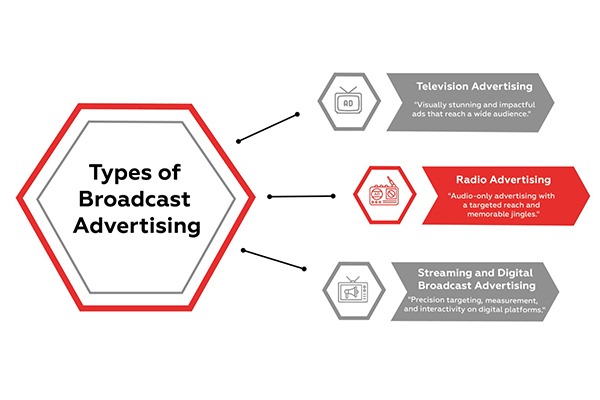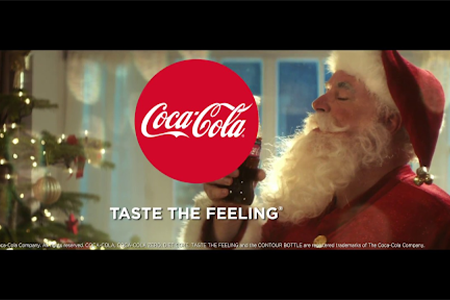Introduction
Broadcast advertising is a powerful medium that utilizes radio and television to reach a wide audience. This powerful medium offers a unique combination of visual and auditory elements, creating a compelling and memorable experience for viewers and listeners alike.
Businesses of all sizes, from multinational corporations to local enterprises, have long recognized the value of broadcast advertising in achieving their marketing objectives. By effectively utilizing this channel, brands can build brand awareness, generate leads, and drive sales.
Understanding Broadcast Advertising
Broadcast advertising has been a dominant force in the advertising industry for decades. Its ability to reach a wide audience, combined with its powerful storytelling capabilities, has made it an invaluable tool for businesses seeking to promote their products and services. Whether it's a catchy jingle on the radio or a visually stunning commercial on television, broadcast advertising has the power to capture attention, evoke emotions, and drive consumer behavior.
Types of Broadcast Advertising

Broadcast advertising encompasses a diverse range of formats, each with its own unique characteristics and advantages. Here are the primary types of broadcast advertising:
Television Advertising

Television advertising, the most visually impactful form of broadcast advertising, combines visuals and audio to create a compelling and immersive experience. Television commercials, or "TV spots," can range from short, attention-grabbing clips to longer, narrative-driven stories.
They offer businesses the opportunity to showcase products, demonstrate features, and evoke emotions in a visually striking way. Television advertising is particularly effective for reaching a broad audience, including households, businesses, and institutions.
Radio Advertising

Radio advertising, while lacking the visual component of television, can be highly effective in reaching a targeted audience. Radio commercials, or "radio spots," are typically shorter than television commercials and rely solely on audio to convey their message.
They can be used to create memorable jingles, deliver informative announcements, or evoke emotions through storytelling. Radio advertising is often used by local businesses, as it can be more cost-effective than television advertising and can target specific demographics or geographic areas.
Streaming and Digital Broadcast Advertising

The rise of streaming platforms and digital technology has led to the emergence of a new type of broadcast advertising: streaming and digital broadcast advertising. This format is similar to traditional broadcast advertising but is delivered through digital platforms rather than over-the-air channels.
Some of the most popular examples include pre-roll ads on streaming services, audio ads on podcast platforms, and video ads on websites and social media. Streaming and digital broadcast advertising offer the benefits of precision targeting, measurement, and interactivity, making it a valuable tool for modern marketers.
Benefits of Broadcast Advertising
Broadcast advertising offers a compelling combination of benefits that make it a valuable tool for businesses of all sizes. Here are some of the key advantages:
1. Wide Audience Reach
One of the most significant benefits of broadcast advertising is its ability to reach a vast and diverse audience. Television and radio broadcasts have a wide penetration, allowing businesses to connect with consumers from various demographics, geographic locations, and socioeconomic backgrounds. This broad reach makes broadcast advertising ideal for building brand awareness, increasing market share, and driving sales.
2. High Impact
Broadcast advertising has a powerful impact on viewers and listeners. The combination of visuals and audio elements creates a more immersive and memorable experience than other forms of advertising. This can lead to increased brand recall, engagement, and purchase intent. Broadcast ads can also be used to evoke emotions, tell stories, and create a strong emotional connection with the audience.
3. Brand Awareness
Repeated exposure to broadcast ads can significantly enhance brand awareness. By consistently appearing on television or radio, businesses can solidify their brand's position in the minds of consumers. This can lead to increased brand recognition, loyalty, and trust.
4. Credibility and Trust
Being featured on television or radio can lend a sense of credibility and trustworthiness to a brand. Consumers often associate broadcast advertising with reputable and established businesses. This perception can help to build trust and confidence in a brand, making it more likely to be considered for purchase.
Challenges of Broadcast Advertising
While broadcast advertising offers numerous benefits, it also presents some challenges that businesses need to consider.
1. High Costs
One of the primary challenges of broadcast advertising is the high cost associated with producing and airing ads. Television and radio advertising can be expensive, especially for prime-time slots and popular programming. This can make it difficult for smaller businesses or those with limited marketing budgets to afford broadcast advertising.
2. Limited Targeting
Compared to digital advertising, broadcast advertising offers less precise targeting options. While it is possible to target specific demographics or geographic areas through broadcast advertising, it can be challenging to reach highly specific audience segments. This can make it less effective for businesses targeting niche markets or specific customer personas.
3. Ad Avoidance
Ad avoidance is a growing challenge for broadcast advertising. Viewers and listeners increasingly find ways to skip or avoid ads, such as using ad-blocking software, fast-forwarding through commercials, or switching channels during ad breaks. This can reduce the effectiveness of broadcast advertising and make it more difficult to reach the intended audience.
Examples of Successful Broadcast Advertising Campaigns
Broadcast advertising has played a pivotal role in the success of numerous iconic brands. Here are a few examples of successful campaigns:
1. Coca-Cola

Coca-Cola's "Happiness" campaigns have been a global phenomenon, resonating with audiences of all ages. These campaigns often feature uplifting visuals, catchy jingles, and messages that promote happiness and togetherness. The "Happiness" theme has become synonymous with Coca-Cola, solidifying its position as a beloved brand worldwide.
2. McDonald’s

McDonald's has long been known for its memorable jingles and catchy visuals. From the "I'm Lovin' It" slogan to the iconic golden arches, McDonald's has created a strong brand identity through broadcast advertising. Their commercials often feature happy families enjoying meals together, reinforcing the idea that McDonald's is a place for fun and enjoyment.
3. Geico

Geico, an insurance company, has gained a reputation for its humorous and attention-grabbing commercials. These ads often feature quirky characters, unexpected plot twists, and memorable lines. By breaking away from traditional insurance advertising, Geico has managed to stand out from its competitors and create a loyal customer base.
Conclusion
These are just a few examples of successful broadcast advertising campaigns. To create impactful campaigns that resonate with your target audience and drive results, partner with our expert advertising agency today and elevate your broadcast advertising strategy!



